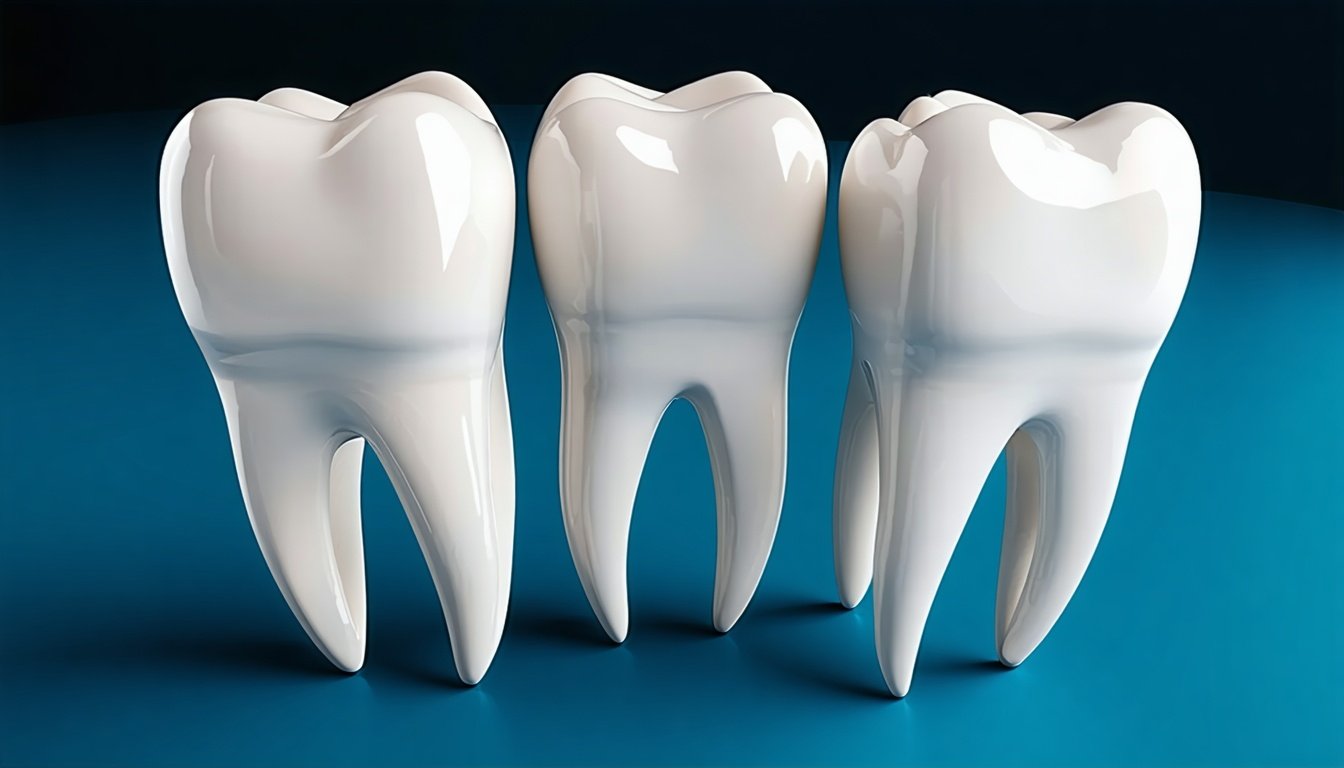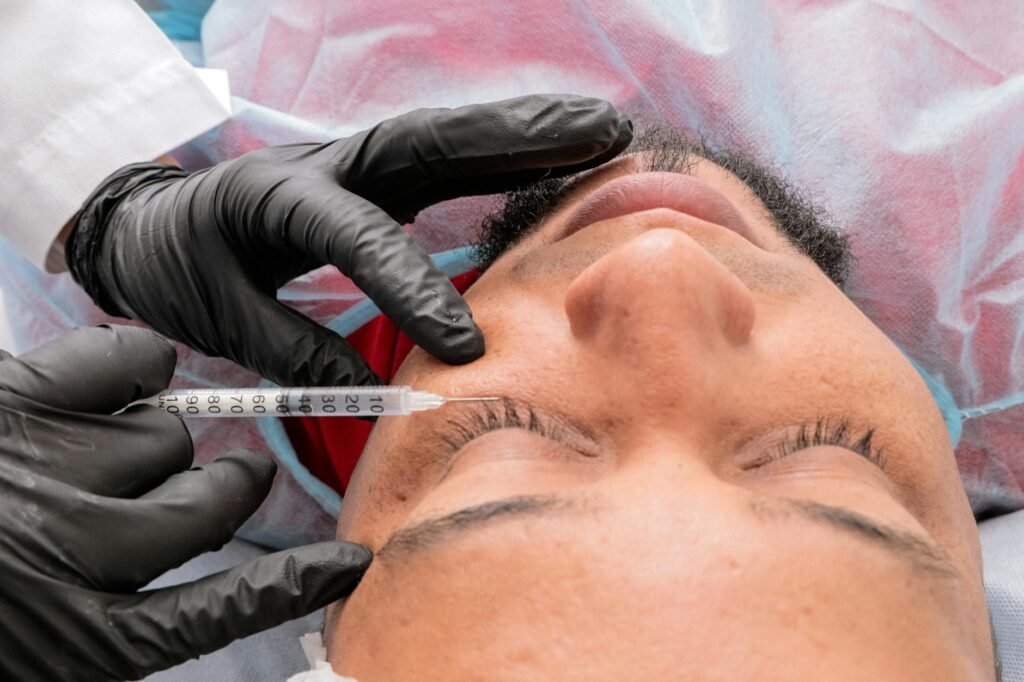Understanding Tooth Infections
Tooth infections aren’t just a pain in the mouth—they can mess with your whole body if you ignore them. Let’s chat about what happens when you let a tooth abscess fester and how these infections get started.
Impact of Untreated Tooth Abscesses
Leaving a tooth abscess untreated is like playing with fire. If it doesn’t drain, the infection might travel to your jaw or even your head and neck. Sometimes, it can punch a hole between your tooth and the sinus, leading to a sinus infection. Worst case, it could turn into sepsis, a nasty infection that spreads everywhere.
| Complication | Description |
|---|---|
| Jaw Infection | Infection spreads to the jawbone, causing osteomyelitis. |
| Sinus Infection | Abscess creates an opening to the sinus, leading to sinusitis. |
| Sepsis | Infection enters the bloodstream, causing a systemic response. |
How fast can these complications show up? It’s a bit of a wild card—it could be weeks or months. That’s why seeing a dentist ASAP is smart to dodge these serious issues (Cleveland Clinic).
Development of Tooth Infections
Tooth infections usually start with a cavity or some damage that lets bacteria sneak into the pulp, the tooth’s inner sanctum. This bacterial invasion causes inflammation and an abscess, which is basically a pus party at the root of the tooth.
The infection can spread faster than gossip, moving from the tooth to the gums, jawbone, and other body parts. Ignoring your oral health can lead to big problems, affecting your mouth and overall health (Emergency Dental Clinics).
| Stage | Description |
|---|---|
| Initial Infection | Bacteria enter the tooth pulp, causing inflammation. |
| Abscess Formation | Pus accumulates at the root tip, forming an abscess. |
| Spread of Infection | Infection extends to surrounding tissues and beyond. |
Folks with other health issues are more likely to face complications from untreated tooth abscesses. Emergency dental care is key to avoiding these nasty surprises (Emergency Dental Clinics).
For more on how tooth infections can escalate, check out our article on how long until a tooth infection kills you.
Progression of Tooth Infections
Understanding how tooth infections progress is key to knowing when to hit the panic button and see a dentist. Here, we break down how these infections spread and what causes them to speed up or slow down.
Spread of Infection Timeline
A tooth infection can be a sneaky little devil. It starts small but potentially causes big trouble if ignored. It usually follows a particular path, but the speed can vary.
At first, the infection hangs out in the tooth and nearby gums. If you don’t step in, it can move to the jaw, neck, and brain. The Cleveland Clinic says this can take weeks or months, but things can go south fast once it hits the danger zones.
| Stage | Timeframe | Symptoms |
|---|---|---|
| Localized Infection | Days to Weeks | Toothache, swelling, pus |
| Spread to Surrounding Tissues | Weeks to Months | Jaw pain, trouble swallowing, fever |
| Systemic Spread | Days to Weeks | Breathing issues, can’t open mouth, severe pain |
The infection can be deadly in just a few days if it reaches places like the brain or heart. This is why getting medical help pronto is necessary to dodge such scary outcomes.
Factors Influencing Infection Spread
Several factors can affect how fast a tooth infection spreads. Knowing these can help you take steps to prevent it.
- Immune System Health: A strong immune system can halt an infection, while a weak one can give it a green light.
- Oral Hygiene: Slacking on oral hygiene can make it easier for the infection to spread.
- Existing Health Conditions: Conditions like diabetes can make it harder for your body to fight off infections, speeding up the spread.
- Type of Bacteria: Some bacteria are like speed demons, spreading faster than others.
- Access to Medical Care: Getting to a dentist or doctor quickly can make a big difference in stopping the infection.
| Factor | Impact on Infection Spread |
|---|---|
| Immune System Health | A strong immune system slows the spread |
| Oral Hygiene | Poor hygiene speeds it up |
| Existing Health Conditions | Conditions like diabetes increase the risk |
| Type of Bacteria | Aggressive bacteria spread faster |
| Access to Medical Care | Quick care stops the spread |
For more on why you shouldn’t wait to get treatment, check out our section on how long until a tooth infection kills you.
By knowing how tooth infections progress and what affects them, you can take steps to keep yourself healthy. Catching it early and getting treatment is the best way to avoid serious problems. For more tips, see our article on how long until a tooth infection kills you Reddit.
Complications and Risks
Life-Threatening Complications
Ignoring a tooth abscess is like playing with fire—it can lead to some pretty scary stuff. If that pesky abscess doesn’t get the boot, the infection might decide to take a little road trip to your jaw and other parts of your head and neck. Imagine this: if the tooth is hanging out near the maxillary sinus, it could create a little tunnel between the abscess and the sinus, leading to a sinus infection. And that’s not all—this can spiral into sepsis, a nasty infection that can spread like wildfire through your body.
| Complication | Description |
|---|---|
| Jaw Infection | Infection crashes the jawbone party, causing osteomyelitis. |
| Sinus Infection | Abscess opens a door to the sinus, leading to sinusitis. |
| Sepsis | Infection hits the bloodstream, causing chaos everywhere. |
| Brain Abscess | Infection sneaks into the brain, forming a pus-filled pocket. |
Rapid Deterioration of Health
Letting a dental abscess linger is like inviting trouble over for dinner. It can spread to places like the jaw, neck, and brain, bringing along some nasty symptoms like trouble swallowing, breathing issues, and a jaw that just won’t budge. Things can go south really fast, sometimes in just a few days. If the infection takes a tour of your brain, heart, and neck, and you don’t get medical help, it can be game over pretty quickly.
| Symptom | Description |
|---|---|
| Trouble Swallowing | Swelling makes swallowing feel like a Herculean task. |
| Difficulty Breathing | Swelling blocks airways, turning breathing into a struggle. |
| Inability to Open Mouth | Pain and swelling lock the jaw tight. |
| Rapid Health Decline | The infection spreads, causing a quick health nosedive. |
Skipping out on oral health care is like rolling the dice with your well-being. A tooth infection, left to its own devices, can wreak havoc on your body, leading to serious health problems and even death (Emergency Dental Clinics). Emergency dental care is a must to dodge these complications, especially if other health issues are lurking in the background (Emergency Dental Clinics).
For more on how tooth infections can turn into a real-life horror story, check out our article on how long until a tooth infection kills you.
Seeking Timely Treatment
Importance of Prompt Medical Care
When a tooth infection pops up, don’t just sit there—get to a dentist pronto! Ignoring a tooth abscess is like inviting trouble to your mouth party. It can spread like wildfire, messing up your smile and your whole body. The infection might take its sweet time, weeks or even months, to spread, but you never know when it’ll go rogue.
If you let a dental abscess hang around too long, it can crash the party in places like your jaw, neck, and brain. We’re talking serious stuff like swallowing problems, breathing issues, and a jaw that won’t budge. At this point, things can get terrible, fast—sometimes in just a few days.
To dodge these nasty complications, see a dentist ASAP. Most folks do the smart thing and get help before things get out of hand (mental). For more on why you shouldn’t wait around, check out our article on how long it takes for a tooth infection to kill you.
Effective Treatment Approaches
Taking down a tooth infection is all about kicking the bacteria to the curb, easing the pain, and stopping any more trouble. Here’s how the pros do it:
- Antibiotics: These meds are like the bouncers for your mouth, eliminating the harmful bacteria causing the infection.
- Drainage: Sometimes, the dentist must let the pus out to ease the pressure and pain.
- Root Canal Therapy is like a deep clean for your tooth. It removes the infected pulp and seals it to prevent the infection from coming back.
- Tooth Extraction: If the tooth is beyond saving, it might have to go to stop the infection from spreading.
- Pain Management: Over-the-counter painkillers can help you feel better while getting treated.
| Treatment Approach | Description |
|---|---|
| Antibiotics | Meds to kick bacteria out |
| Drainage | Letting the pus out |
| Root Canal Therapy | Deep clean and seal infected tooth |
| Tooth Extraction | Pulling the tooth if needed |
| Pain Management | Painkillers to ease discomfort |
For more on handling tooth infections, swing by our article on how long until a tooth infection kills you reddit.
Knowing why quick medical care matters and the treatment options, you can tackle tooth infections head-on and avoid serious problems. For more tips on keeping your mouth in tip-top shape and catching issues early, check out our sections on oral hygiene practices and early detection and intervention.
Prevention and Management
Keeping those pearly whites in tip-top shape isn’t just about flashing a winning smile; it’s about dodging nasty tooth infections that can mess with your health. You can avoid dental disasters with a little TLC for your teeth and catching problems early.
Oral Hygiene Practices
Think of good oral hygiene as your trusty shield against tooth infections. Regular brushing, flossing, and dental check-ups are your best buddies in keeping those pesky bacteria at bay.
- Brushing: Hit those teeth with a toothbrush and fluoride toothpaste twice daily. It’s like giving plaque and food bits the boot before they cause trouble.
- Flossing: Get in between those teeth and under the gumline with floss daily. Your toothbrush can’t reach those sneaky spots.
- Mouthwash: Swish around some antimicrobial mouthwash to zap bacteria and keep your breath fresh.
- Regular Dental Visits: Make a date with your dentist every six months. They’ll spot any issues before they turn into big headaches.
| Oral Hygiene Practice | Frequency |
|---|---|
| Brushing | Twice daily |
| Flossing | Once daily |
| Mouthwash | Once daily |
| Dental Visits | Every 6 months |
For more tips on keeping your mouth in mint condition, check out our article on how long until a tooth infection kills you.
Early Detection and Intervention
Spotting dental problems early and jumping on them fast is the secret sauce to stopping tooth infections from going rogue. Knowing the warning signs and getting help pronto can keep bacteria from wreaking havoc.
- Recognize Symptoms: Watch for tooth pain that won’t quit, swelling, redness, and pus. These are red flags that scream for attention.
- Seek Prompt Medical Care: If any of these symptoms pop up, don’t wait—see a dentist immediately. Quick action can stop the infection from spreading and causing bigger health woes (Healthline).
- Follow Treatment Plans: Stick to the dentist’s orders, whether it’s antibiotics, draining an abscess, or pulling a tooth if things get serious.
| Symptom | Action |
|---|---|
| Persistent Tooth Pain | Consult a dentist |
| Swelling | Seek immediate care |
| Redness | Schedule a dental visit |
| Pus | Follow prescribed treatment |
For more on why catching problems early is a lifesaver, check out our article on how long until a tooth infection kills you Reddit.
By keeping your teeth clean and being on the lookout for trouble, you can keep your dental health in check and avoid nasty complications. Regular care and quick treatment are the keys to a healthy smile and feeling good.
Gum Disease and Tooth Loss
Leading Cause of Tooth Loss
Gum disease, or periodontal disease if you’re feeling fancy, is why adults lose their teeth. Almost half of the grown-ups in the U.S. are dealing with this pesky problem. It starts with your gums getting all puffy and red, a condition called gingivitis, and can get worse, eventually wrecking the support system around your teeth.
Managing Gum Disease
You can’t completely eliminate gum disease, but you can keep it in check with the right care. Once the support around your teeth is gone, it’s tough to get it back. But don’t lose hope—periodontal treatment can help fight off infection and even rebuild some bone and tissue (Cleveland Clinic).
The treatment you need depends on how bad the gum disease is. Here’s a quick rundown of what might be on the menu:
- Early Stages: Regular dental cleanings and stepping up your oral hygiene game.
- Moderate to Advanced Stages:
- Scaling and root planning
- Pocket reduction surgery
- LANAP (Laser-Assisted New Attachment Procedure)
- Bone grafting
- Gum grafting
- Guided tissue regeneration
- Platelet-rich fibrin/plasma therapy
| Treatment Type | Description |
|---|---|
| Scaling and Root Planing | A deep clean to get rid of plaque and tartar hiding below the gum line. |
| Pocket Reduction Surgery | Shrinks gum pockets to make them easier to clean. |
| LANAP | Uses a laser to zap diseased tissue and help healing. |
| Bone Grafting | Adds graft material to replace lost bone and support teeth. |
| Gum Grafting | Covers up exposed roots to stop more gum recession. |
| Guided Tissue Regeneration | Helps new bone and tissue grow. |
| Platelet-rich fibrin/Plasma | Uses your own blood to boost healing and regeneration. |
Catching and treating gum disease early is key to keeping your mouth healthy. If you ignore it, you might end up with more health issues and, yep, lose some teeth (Cleveland Clinic).
Are you curious about how tooth infections can escalate? Check out our article on how long until a tooth infection kills you.












2 Responses